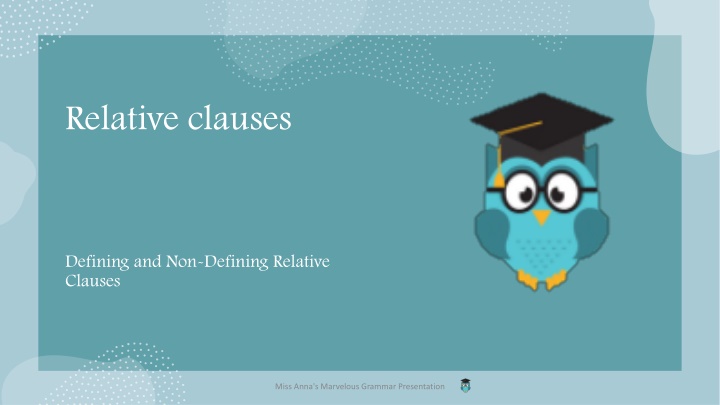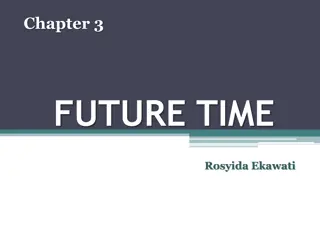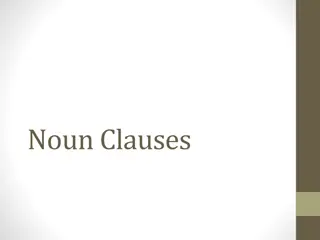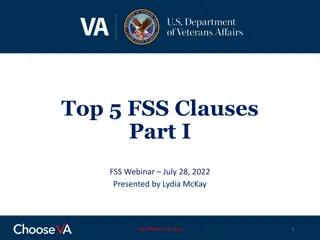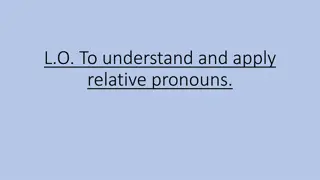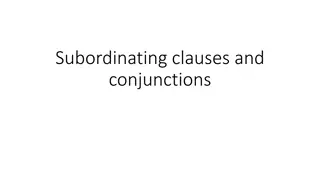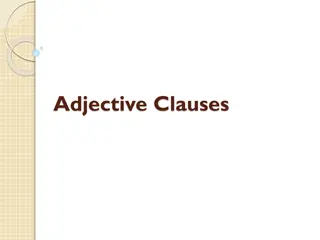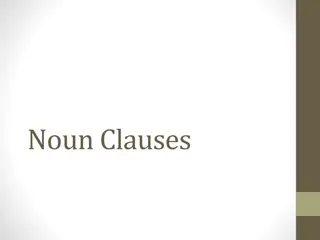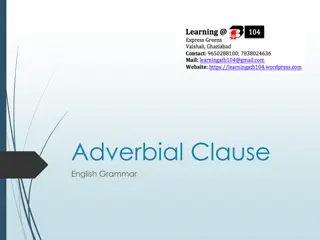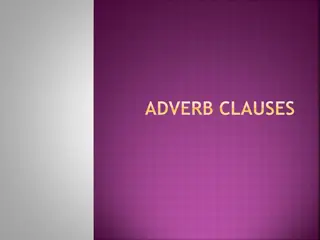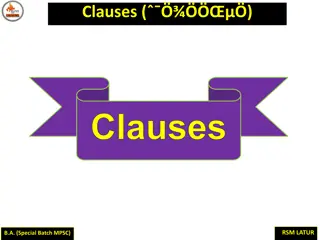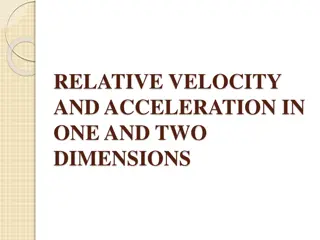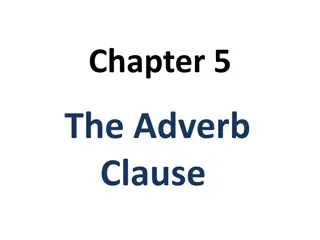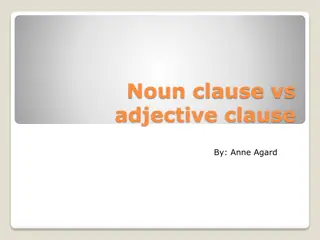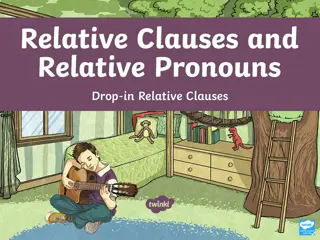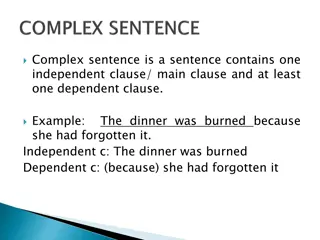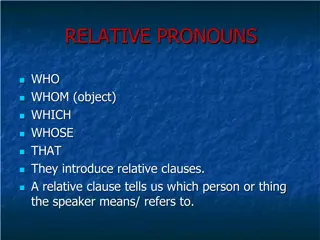Relative Clauses: Defining vs. Non-Defining
Relative clauses provide essential information about a person or thing mentioned in a sentence. Defining relative clauses are crucial for sentence meaning, while non-defining clauses offer additional details. Learn about relative pronouns, omitting pronouns, and how to distinguish between defining and non-defining clauses. Explore examples and understand the usage of commas in different types of relative clauses.
Download Presentation

Please find below an Image/Link to download the presentation.
The content on the website is provided AS IS for your information and personal use only. It may not be sold, licensed, or shared on other websites without obtaining consent from the author.If you encounter any issues during the download, it is possible that the publisher has removed the file from their server.
You are allowed to download the files provided on this website for personal or commercial use, subject to the condition that they are used lawfully. All files are the property of their respective owners.
The content on the website is provided AS IS for your information and personal use only. It may not be sold, licensed, or shared on other websites without obtaining consent from the author.
E N D
Presentation Transcript
Relative clauses Defining and Non-Defining Relative Clauses Miss Anna's Marvelous Grammar Presentation
Relative clauses They give us information about a person or thing mentioned. The woman who lives next door is a sales manager. There are some flights that have been cancelled. Summer is the season when we go on holiday This is the stadium where Real Madrid plays. He is the painter whose painting was sold for a 1 million dollars. Miss Anna's Marvelous Grammar Presentation
Relative pronouns and adverbs: We use relative pronouns or adverb to connect a relative clause: who/that for people which/that for animals and objects whose for possessions where for places Miss Anna's Marvelous Grammar Presentation
Defining Relative clauses All the previous sentences are defining relative clauses: Defining relative clauses give us essential information The sentence makes no sense without the relative clause You can use that There are no commas The woman who lives next door is a sales manager. There are some flights that have been cancelled. Summer is the season when we go on holiday This is the stadium where Real Madrid plays. He is the painter whose painting was sold for a 1 million dollars. Miss Anna's Marvelous Grammar Presentation
Omitting the relative pronoun In these sentences the relative pronoun can be omitted: The woman (who/that) I love sales manager. There are some flights (that) nobody would take nobody would take. Everything you say you say sounds correct. Everybody I know I know will be at the party. You can omit the relative pronoun if: The relative pronoun is the object of the sentence A relative pronoun is the object of the clause because it is followed by another subject subject + verb I love is a verb Miss Anna's Marvelous Grammar Presentation
Non-Defining Relative clauses Non-defining relative clauses give us extra information The message of the sentence is clear without the relative clause. You can t use that , you must use which instead Commas separate the relative clause from the rest of the sentence My aunt, who lives next door, is a sales manager. My dog, which is cocker spaniel, is eleven years old. Summer, when we get our holidays, is my favourite season. Wembley Stadium, where FA Cup Final is played, can host 90000 spectators. My cat, whose name is Lady Agatha, was adopted from the street. Miss Anna's Marvelous Grammar Presentation
